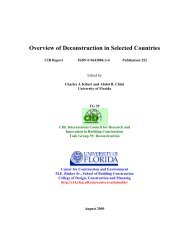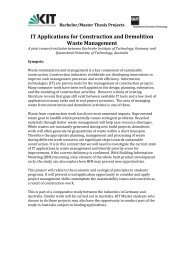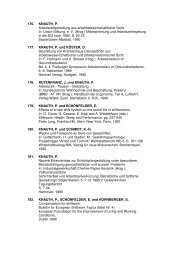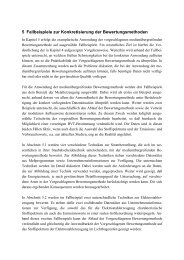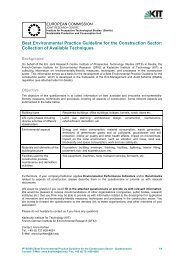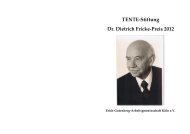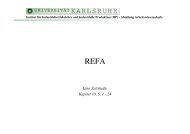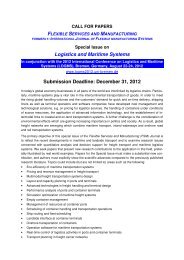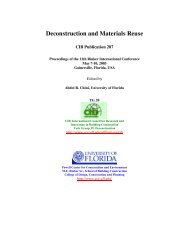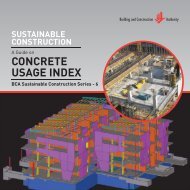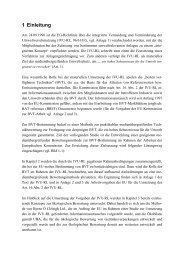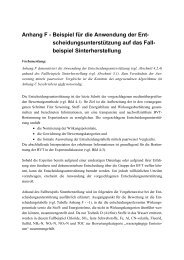Waste reduction final report -4 - Test Input
Waste reduction final report -4 - Test Input
Waste reduction final report -4 - Test Input
Create successful ePaper yourself
Turn your PDF publications into a flip-book with our unique Google optimized e-Paper software.
Table 6: Sales volumes of recycling materials as to ARV and FSKB in 2006 and 2007<br />
RC-Material Sales volume 2006 in<br />
MT<br />
Sales volume 2007 in<br />
MT<br />
Recycled concrete 0.868 0.865<br />
aggregates<br />
Recycled asphalt 0.399 0.360<br />
aggregates<br />
Recycled mixed 0.346 0.390<br />
aggregates<br />
Total granules 1.613 1.615<br />
Recycling gravel 1.025 0.968<br />
Diverse 0.483 0.399<br />
Total ARV 3.122 2.984<br />
Recycling materials Ca. 5 Ca. 5<br />
FSKB<br />
Total recycling<br />
materials<br />
8.122 7.984<br />
The sales volume in 2007 is slightly less than in 2006: 7.948 MT vs. 8.122 MT. Given the<br />
quite big uncertainty, this is not taken as relevant; all the more that in the whole, secondary<br />
products on the market have steadily been rising in the last years. Furthermore, one should<br />
consider that there are stockpiles of certain materials, especially of recycled mixed aggregates<br />
and Recycled asphalt aggregates.<br />
A similar listing has been shown in [VSS 2002]. There was given a total of 5.4 MT of<br />
recycling material by the ARV, therefore being much higher than the 3 MT in 2006 and 2007.<br />
Investigations resulted in the supposition that these data probably have been estimated<br />
including materials not following the quality guidelines.<br />
According to Mr Suter, executive of ARV, data of ARV and FSKB account for about 70% to<br />
80% of all recycled materials in the construction sector. The total amount of discharge of<br />
recycled materials can be estimated to be 13 MT per year. This is higher than the mentioned 9<br />
MT in Figure 4; one has always to consider that all data are estimations. Given the total need<br />
of about 60 MT of construction materials in the Swiss market, recycling materials can cover<br />
about 20% of the need, even if the recycling rate is at 80% today. It has further to be taken<br />
into account that, for example, 125% of input material may be required to reach 100% of<br />
usable material [Gellenkemper, et al. 2004]. This means that even if a rate of 100% recycling<br />
would be reached, only about ¼ of the total construction materials market could be provided<br />
with secondary materials. For example, as to [Lichtensteiger 1997], the percentage of<br />
recycled material in the whole stock of Swiss buildings is lower than 1%. Please note that<br />
these calculations can differ much from material to material. The input of secondary gravel<br />
for example is estimated to be at about 10% of total gravel demand [FSKB 2008a].<br />
101



